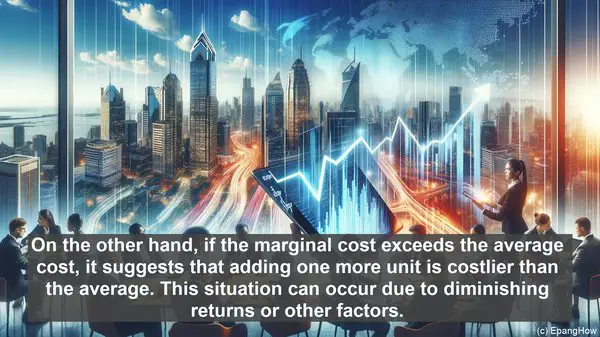Introduction: The Cost Conundrum
Hello, everyone! When it comes to economics, one of the fundamental aspects is understanding costs. Today, we’ll delve into the intriguing world of costs, focusing on the difference between marginal cost and average cost.

Defining Marginal Cost
To begin, let’s define marginal cost. Marginal cost refers to the cost incurred by producing one additional unit of a product or service. It takes into account the additional expenses required, such as raw materials, labor, and energy. Essentially, it’s the cost of expanding production by a single unit.
Understanding Average Cost
On the other hand, average cost is the total cost divided by the number of units produced. It provides an overall picture of the cost per unit. By dividing the total expenses by the quantity, we get the average cost, which can be a useful metric for assessing profitability.
The Relationship: Marginal Cost and Average Cost
While marginal cost and average cost are distinct concepts, they are interconnected. In fact, the relationship between the two is crucial in decision-making. Let’s explore this further.

Marginal Cost vs. Average Cost: Decision-Making Insights
When the marginal cost is below the average cost, it implies that producing an additional unit is relatively inexpensive. This scenario often arises when there are economies of scale. On the other hand, if the marginal cost exceeds the average cost, it suggests that adding one more unit is costlier than the average. This situation can occur due to diminishing returns or other factors.
The Significance in Business Strategy
The understanding of marginal cost and average cost is vital in various aspects of business strategy. For instance, when setting prices, it’s crucial to consider the marginal cost to ensure profitability. Similarly, in capacity planning, analyzing the relationship between these costs can aid in optimizing resources and production levels.
